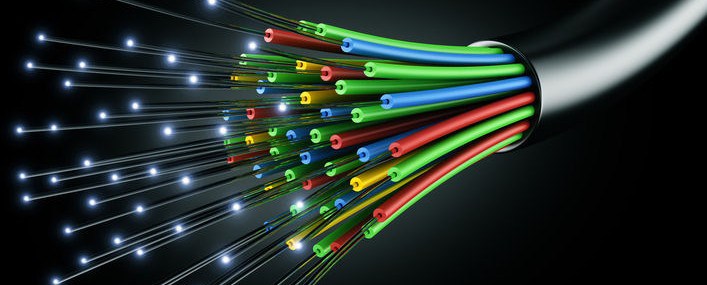Optical Fiber is increasingly popular and the cost is getting cheaper. For users, when it comes to optical fiber, they will immediately think of speed. However, they do not know the structure of the fiber.

Now, Golden Link will share some information about optical fiber, you can consult to understand more about it.
What is optical fiber?
Even its name has it should be somewhat characteristic of this product. The cable is very small, just like a hair, but has the ability to transmit data very fast, with less noise and farther than copper cable many times. Material for making cables is usually glass or transparent plastic.
Next Golden Link will help you answer the question of what optical fiber structure looks like?
Structure of optical fiber?
Optical fiber is covered by protective layers to ensure the cable is not affected during construction and reduce signal consumption.

Optical fiber consists of 5 main components:
+ Core: the center reflects the light of the fiber
+ Cladding: is the second layer surrounding the core with a refractive index less than the core's refractive index, the function of reflecting light rays towards the core.
+ Coating: The coating has the function of removing refracting rays from the coating, preventing the penetration of water vapor, avoiding scratches, reducing the bending and bending of the cable. This coating is dyed in different colors according to the color standards specified in the telecommunications industry to distinguish them from each other. Materials used for coating can be Epoxy Acrylate, polyurethanes, Ethylene Vinyl Acetate ...
+ Strength Member: the most commonly used material is Aramit (Kevlar), filamentous metal, or thin steel tape that is crimped in sinusoidal waves.
+ Outer Jacket: cable sheath has the effect of protecting the gut of cable to avoid the impact of external impacts such as bumps, rodents, humidity, temperature ... Materials used for optical fiber casing are often used: PE, HDPE, PUR they have lightweight, durable properties for impact, fire, electrical and thermal insulation.
Advantages of optical fiber
Low signal attenuation (Multimode can be up to 2000m)
Large bandwidth (up to THz)
Optical fiber is much lighter than copper cable
Small size, suitable for construction in places with narrow spaces.
No electromagnetic interference
Safety: optical fiber does not conduct electricity like copper cable
Information security than copper cable.
Flexible in practical applications
Disadvantages of optical fiber
Before transmitting signals via optical fiber, the signal must be converted from electricity to light waves
Easy to break: made from glass, it is easier to break
Difficult repair requires specialized equipment and well-skilled staff.
Light in the optical fiber if shining directly into the eye can be harmful to the eyes.
Optical fiber application
Multimode
Used for signal transmission in short distances, including:
- Step index: Used for short distances, popular in internal lights.
- Graded index: Commonly used in LANs.
Single mode
Used for a distance of thousands of kilometers, popular in telephone networks, cable television networks, 8um diameter, hundreds of kilometers away without amplification.